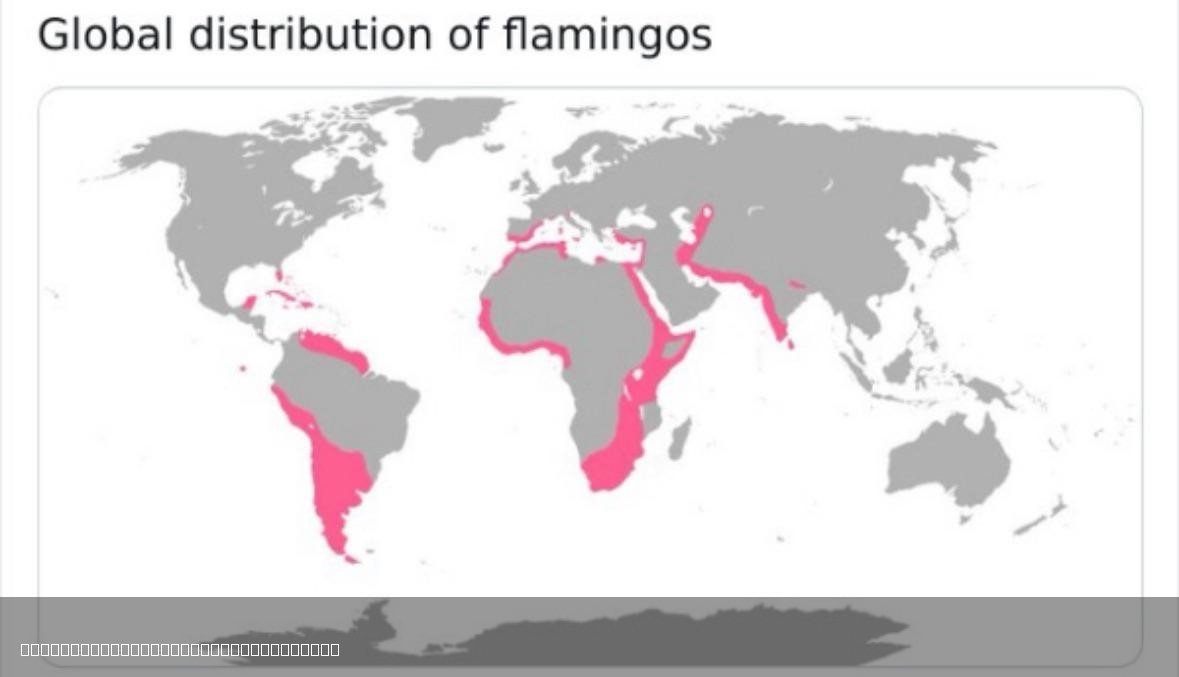Global Distribution of Flamingos Map


Marcus Rodriguez
Historical Geography Expert
Marcus Rodriguez specializes in historical cartography and geographic data analysis. With a background in both history and geography, he brings unique...
Geographic Analysis
What This Map Shows
The "Global Distribution of Flamingos Map" illustrates the various regions around the world where flamingos are found. This map highlights both the breeding and non-breeding habitats of these remarkable birds, showcasing their presence in diverse ecosystems, from coastal wetlands to saline lakes. Flamingos are iconic for their vibrant pink feathers and unique feeding habits, and understanding their distribution helps us appreciate the environmental conditions they thrive in.
Deep Dive into Flamingos
Flamingos belong to the family Phoenicopteridae and are known for their long legs, necks, and distinctive feeding behaviors. Interestingly, their pink coloration primarily comes from carotenoid pigments found in their diet, which consists mainly of algae and small crustaceans. This dietary preference limits their distribution to specific habitats that are rich in these food sources.
Flamingos are typically found in shallow waters, including lagoons, estuaries, and mudflats, where they can easily feed by filtering food from the water. Their social structure is also fascinating; they often gather in large flocks, which can number in the thousands. This not only aids in foraging efficiency but also plays a critical role in their breeding rituals.
The most common species, the Greater Flamingo, can be found in parts of Africa, Southern Europe, and South Asia. In contrast, the Lesser Flamingo, known for its smaller size and darker coloration, prefers alkaline lakes in Africa and India. The geographic distribution of flamingos is closely tied to climatic conditions, with most species preferring warm, shallow waters.
Research has shown that flamingos are sensitive to changes in their environment, making them important indicators of ecosystem health. For example, fluctuations in water levels, salinity, and food availability can impact their breeding success and overall population dynamics. In recent years, conservation efforts have focused on protecting their habitats, especially in areas threatened by human activity and climate change.
Regional Analysis
Examining the map reveals distinct patterns in flamingo populations across different regions. In Africa, for instance, the famous Rift Valley lakes are critical breeding grounds for both the Lesser and Greater Flamingos. Lakes like Nakuru and Bogoria in Kenya host massive flocks, particularly during the breeding season. Conversely, in South America, the Andean Flamingo can be found in high-altitude salt flats, demonstrating how these birds adapt to diverse environments.
Europe also hosts flamingos, particularly in the Mediterranean region. The Camargue in France is renowned for its large flamingo populations, attracting bird watchers from all over the world. However, the distribution varies seasonally; many flamingos migrate to warmer climates during colder months, leading to fluctuating populations in breeding areas.
Interestingly, in recent years, flamingos have been spotted in regions where they had not been seen for decades, such as in parts of Spain, signaling a potential shift in their range possibly due to climate change or habitat restoration efforts.
Significance and Impact
Understanding the global distribution of flamingos is crucial not only for conservation efforts but also for maintaining biodiversity. These birds play an essential role in their ecosystems, influencing the health of wetlands and aquatic environments. Their presence can indicate the overall health of these habitats, making them valuable to ecologists and conservationists alike.
Moreover, flamingos have significant cultural and economic impacts in the regions they inhabit. They attract ecotourism, which can provide economic benefits to local communities while fostering conservation awareness. However, with rising threats such as habitat loss, pollution, and climate change, it is imperative to prioritize the protection of their habitats. Future projections indicate that if current trends continue, we may see shifts in their distribution patterns, making it vital to monitor and adapt conservation strategies accordingly.
Preserving these magnificent birds and their habitats is not just about protecting a species; it is about preserving the delicate balance of our ecosystems and the rich biodiversity they support. So, next time you see a flamingo, remember the intricate web of environmental factors that allow them to thrive in their vibrant, pink glory.
Visualization Details
- Published
- August 7, 2025
- Views
- 134
Comments
Loading comments...